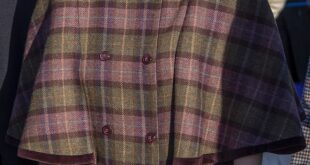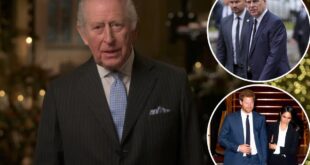roduction of the first coins of the King for circulation has started at the Royal Mint, beginning the transition from Queen Elizabeth II to her son’s portrait on the nation’s coinage.
The move represents the biggest change to UK coinage since decimalisation, with a memorial 50 pence in honour of the late Queen appearing in the public’s change through banks and post offices from December.
Workers at the Royal Mint in Llantrisant, south Wales, will produce 9.6 million copies of the coin to mark the Queen’s death at the age of 96.
In tribute to the Queen, the reverse of the 50p features the design that originally appeared on coins to commemorate her coronation at Westminster Abbey in 1953.
It includes the four quarters of the Royal Arms depicted within a shield, with emblems of the home nations – a rose, a thistle, a shamrock and a leek.
There are approximately 27 billion coins bearing the portrait of the late Queen currently in circulation in the UK and these will remain legal tender, being replaced over time as they become damaged or worn and to meet demand.
Historically, it has been common for coins featuring different monarchs to be used at the same time and this will now happen with coins of the late Queen and Charles.
Kevin Clancy, director of the Royal Mint Museum, said: “For many people this will be the first time in their lives that they have seen a new monarch appear on money.
“It represents the biggest change to UK coinage since decimalisation and will usher in a new era where the coins of Queen Elizabeth II and Charles co-circulate in the UK.
“The new memorial 50 pence marks a moment in history and honours a landmark reign that lasted for 70 years.”
The coins will be made on demand in line with the wishes of the King and the late Queen, who asked for minimal waste during the process.
Rebecca Morgan, director of collector services at the Royal Mint, confirmed that “nothing is removed or changed just for change’s sake”.
“It wasn’t unusual to see two or three different monarchs on coins before decimalisation,” she said.
“As a result of decimalisation, most people under the age of 50 only ever have seen Queen Elizabeth II in their pockets.”
The 50 pence coin was chosen as it is one of the most popular for people to start collecting.
“I think it is really poignant that the King’s first coins are in tribute to his late mother,” Ms Morgan added.
“The only difference on the reverse of the coin is the date on either side of the leek, which is 2022 rather than 1953.”
It takes between 18 months to two years to design a coin, with the monarch personally signing off each one.
Before her death, the Queen signed off a number of coins – including a Harry Potter commemorative series – and production of these will continue.
This will mean that two of the Harry Potter series will feature the Queen, with the final two bearing the portrait of the King.
Production of coins with the Queen’s portrait will conclude by the end of the year.
Acclaimed British artist Martin Jennings, who usually works in bronze and stone, designed the official portrait of Charles to be struck onto coins.
In the portrait, Charles faces to the left, the opposite direction to his mother. This is because tradition states monarchs face the opposite way to their predecessors on coinage.
Tradition also dictates that Kings do not wear crowns in their portraits on coins, while Queens are pictured crowned.
Mr Jennings worked with images of Charles taken to mark his 70th birthday and began by drawing his design on paper, before creating a model in plaster.
“It is extremely painstaking work with microns of material,” he said. “It has to be an absolute likeness. It is a portrait of the monarch but also of the individual.”
The completed plaster cast was then handed to experts at the Royal Mint, where it was digitally reduced to fit the size of each coin denomination.
“It has been a big design challenge,” Mr Jennings said. “The placing of everything is exactly precise, such as the spacing between the letters, the proximity with the head.
“It is a huge honour. It is extraordinary to think that the smallest piece of work that I have ever done is that one that is going to be reproduced in the most multiples.”
Previous works by Mr Jennings include a sculpture of poet Sir John Betjeman at St Pancras Station, one of nurse Mary Seacole by Westminster Bridge and a bronze bust of the Queen Mother at St Paul’s Cathedral.
Mr Jennings, who officially started production of the 50p coins at the Royal Mint, described seeing them in person as “astonishing”.
“So many are so quickly produced and they are all so perfect, it is remarkable,” he said.
To make the 9.6 million coins, four presses will be running for 16 hours a day at the Royal Mint’s site.
Each press can strike 400 coins per minute, making around 20,000 coins an hour.
The coins are checked and counted before being packed into cartons of 100,000, which are then sent to banks and sorting offices across the country.
Source link



